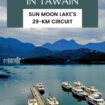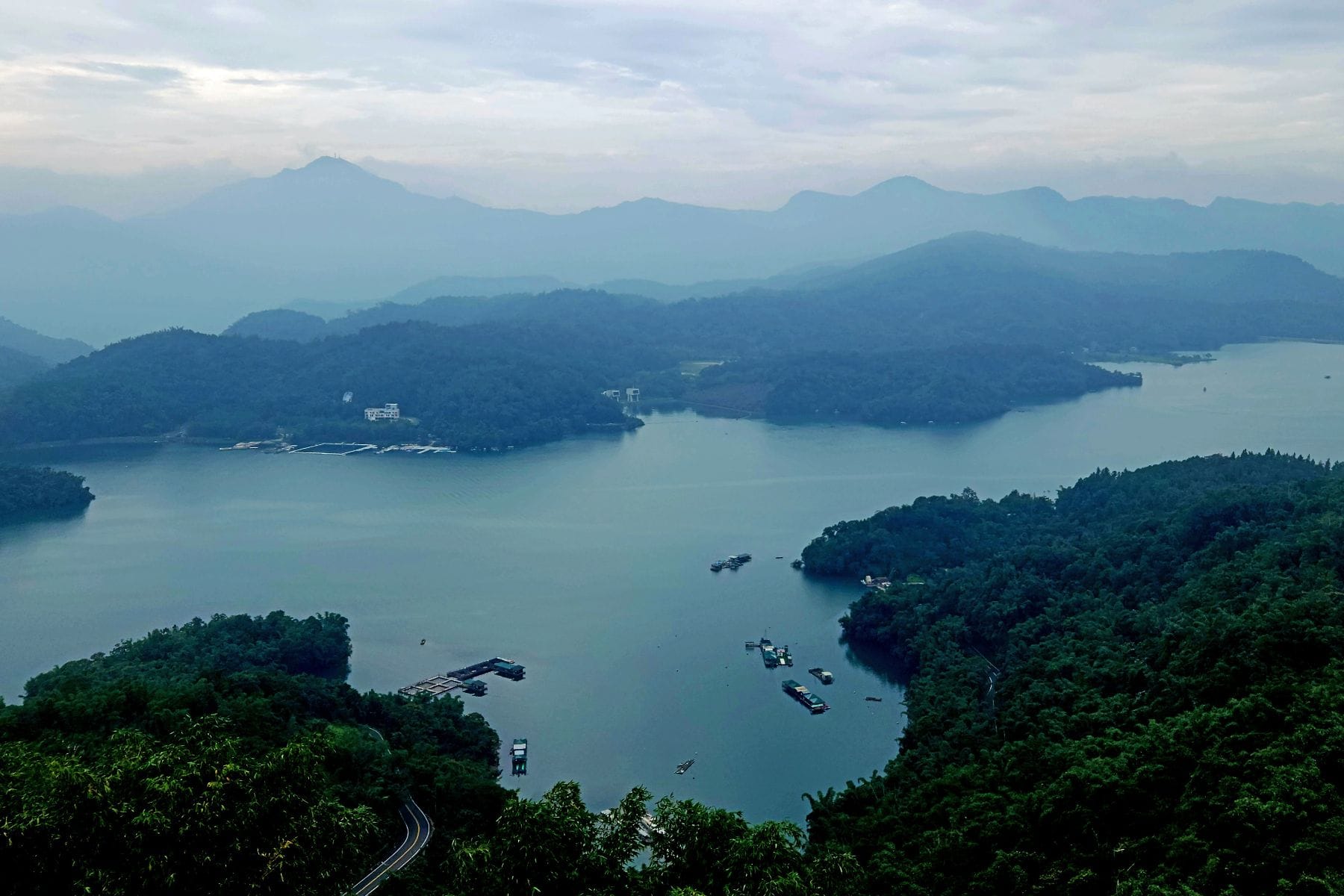
Go World Travel is reader-supported and may earn a commission from purchases made through links in this piece.
Sun Moon Lake is one of Taiwan’s most popular tourist attractions enchanting visitors with its serene natural beauty, mysterious mist-veiled mountains, deep-blue water, and grand temples and pagodas. A small number of the millions of annual visitors also come to pedal what has been called one of the world’s best bike trips: the 29-kilometer (about 18 miles) around-the-lake circuit.
Alternating from flat to steep inclines to downward slopes, the ride is an endless parade of changing vistas evoking Chinese landscape paintings, from sneak glimpses through the forest cover to expansive panoramas.
The route is mostly on the road itself ‒ only about a fourth is a dedicated bike path ‒ but luckily there are few cars. A verdant sub-tropical forest (the lake lies just north of the Tropic of Cancer) carpets the mountains ringing the lake down to the water’s edge.
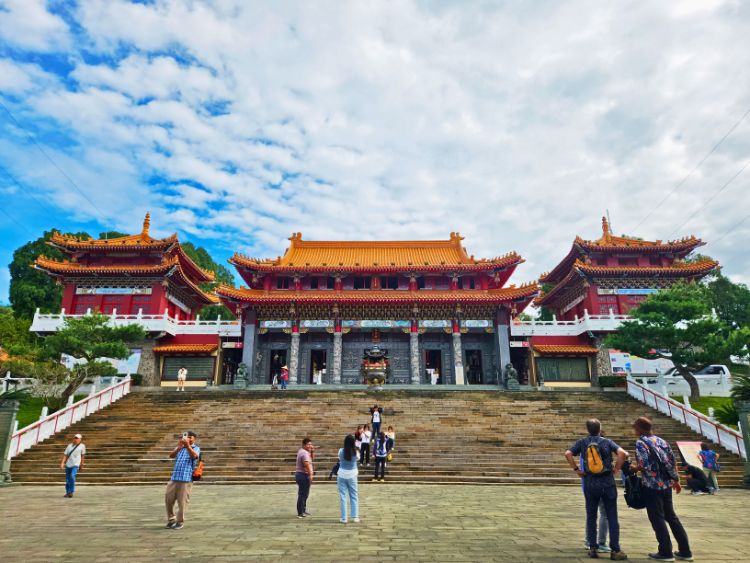
Exquisite Nature and Manmade Wonders
Rather than just a straight ride through exquisite nature, the circuit is studded with regular stops to take in manmade wonders including one of Taiwan’s premier temples and a state-of-the-art cable car taking the views to new heights.
It starts off flat for several miles before hitting the steepest slope of the trip ‒ a tough pedal winding up to a spectacular payoff: Wenwu Temple. The massive, imposing and richly decorated temple dominates a hilltop site overlooking the lake, with a huge entry gate painted a deep forest green. Vacationers and tour buses descend on Wenwu, the lake’s most popular stop for visitors, because it’s majestic, a spiritual hub for praying believers and among Taiwan’s most beautiful temples.
Hundreds of gold ribbons, folded and shaped like lanterns, are dangling in long rows in a glittering display of the power of the temple’s gods: each ribbon lantern represents the yearning of a believer who, in making an offering and hanging a lantern, asks the gods to fulfill a wish (like a wishing well or throwing a coin in a fountain, such as the Trevi in Rome). You can purchase a lantern, and they will write your name on it.
From Wenwu, the route winds and twists close to the lake on mostly flat terrain with one section a waterfront wooden pathway. The ride penetrates a lush green haven of giant bamboo, palm trees, tropical evergreens and camphor and acacia trees, with the forest floor carpeted with ferns and coleus.
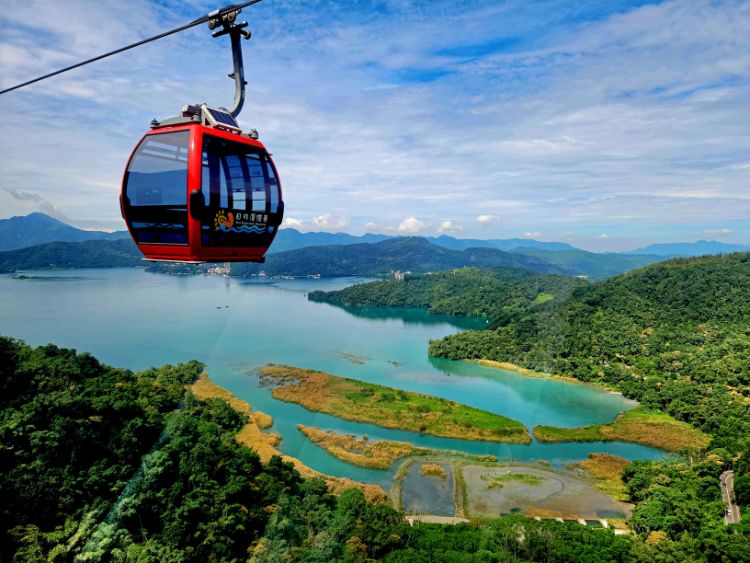
Bird’s-Eye Panoramas on the High-Speed Cable Car
A few, slightly downhill kilometers later I arrived at the Ropeway Station and its far-reaching bird’s eye panoramas of the lake. The high-speed cable car soars up to the highest point in the mountains around the lake, delivering mesmerizing views and perspective. From there, it dips down to an intra-mountain station from where you can either return or take a much-shorter second cable car to a kids’ amusement park (also accessible by road) that parrots Disneyland (a pirate ship, a Space Mountain ride, Jurassic Cruise, Aladdin Pavilion, etc.). Choose a Crystal cable car rather than a Regular: the clear-glass floor allows you to peer straight down into the dense forest below.
From the Ropeway, it’s a quick shot to Ita Thao, the ‘food court’ of the lake where riders usually stop for lunch. Its tiny center is chock-a-block with eateries serving everything from rice and noodle dishes to chicken and pork skewers and fried sweet potato balls. During daylight hours, ferries run between the lake’s two towns located at the center of the lake on opposite shores: Shuishe, the main town and starting point of the ride where most hotels are, and Ita Thao, bringing hungry tourists.
To meet the tourism demand, a number of high-rise hotels have been built, detracting from the lake’s zen ambiance, but thankfully they are all clustered in the two towns.
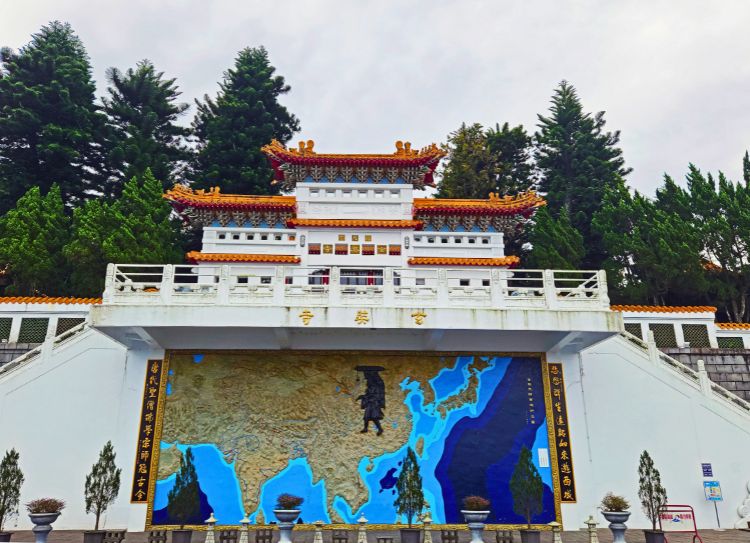
Xuanxang Temple is a Tranquil Haven
From Ita Thao, the road climbed gradually for the next four kilometers and from the high point I coasted down to simple, tranquil Xuanxang Temple. White rather than the typical bright colors and dark woods, it’s a haven for relaxing and recharging (I ate my lunch here rather than at busy Ita Thao) with few tourists, relaxing serene gardens and comfortable benches overlooking the lake. Squadrons of swooping dragonflies and fluttering butterflies were the only distraction from the magnificent views.
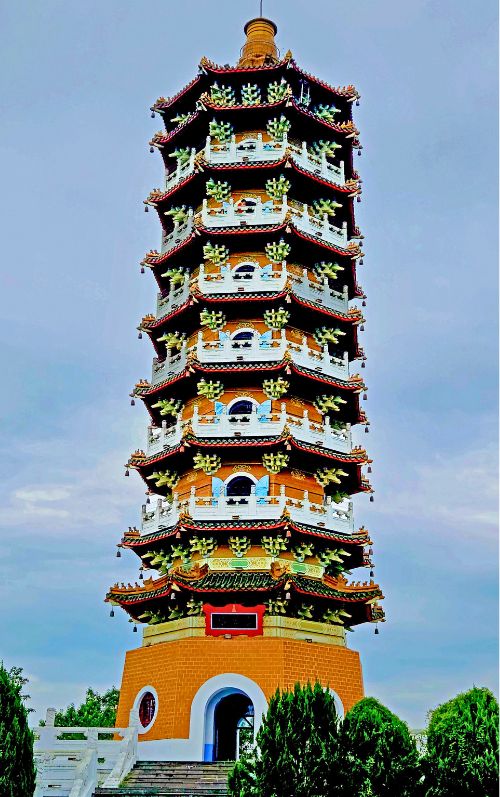
Visit the Pagoda of Kindness and Grace While Biking in Taiwan
Near Xuanxang I veered off the path and hiked about 20 minutes to Ci’en Pagoda, or the Pagoda of Kindness and Grace. Built in the traditional Chinese style by Chiang Kai-Shek, the nationalist Chinese leader and long-serving president of Taiwan, it’s an imposing edifice reached via a steep path of stone stairs through a bamboo forest. Ci’en stands atop 954-meter Shabalan Mountain, while the structure itself is 46 meters, for a total of 1000 meters (about 3,281 feet). The view – after walking up the 12 flights of stairs – is the most far-reaching of the southern end of the lake.
Next, a gradual downhill ride in broad loops brought me to Xuanguang Temple – a small, unassuming temple notable only for its location: on a prominent promontory overlooking brooding mountains and the scraggly coastline of the lake.
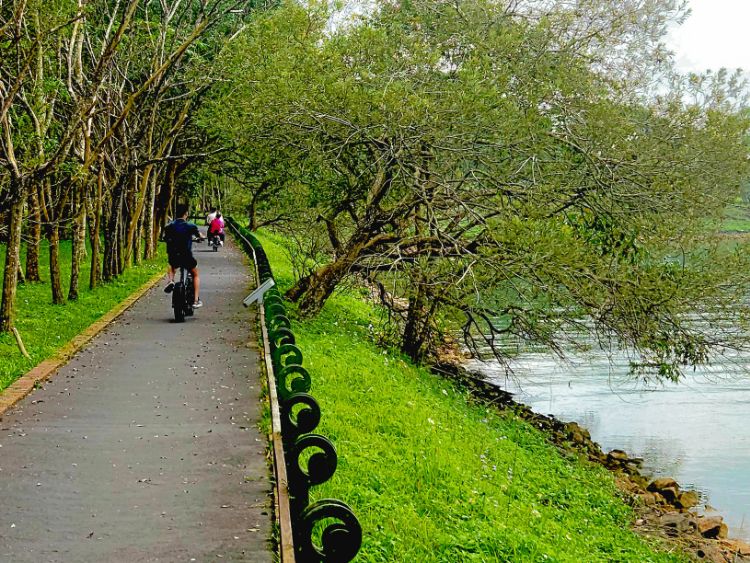
Tuetan Bikeway Puts You Right on the Water
More looping road brought me to the trailhead of Tuetan Bikeway, a dedicated bike path running the route’s final six kilometers back to Suishe. The first section is problematic: the path is narrow, very steep and somewhat wild and overgrown, making it difficult and dangerous to ride. Signs warn you to walk your bike, and that is the safest and best way to go. It was hard work and at times precarious, but the smart design of the path ameliorated the difficulty: a staircase down the middle with a ramp on either side. So you walk the stairs while you roll the bike.
Once down to flat ground, it’s the most bucolic countryside of the ride, oozing sylvan charm with a wooden bike path, stands of aromatic camphor trees, dense ferns, bamboo and wild banana trees. The previous 20+ kilometers of the route is mostly on the road, above the lake – which, with the few cars and great views, is not a measurable negative – but the Tuetan Bikeway puts you right on the water.
It also gets much busier. Until then I encountered only an occasional other rider, but on the Bikeway riders were coming and going in numbers because it’s an easy, flat path readily accessible from Shuishe for the typical vacationer renting a bike. Very few actually take on the full around-the-lake circuit. I exchanged smiles and nods with many fellow cyclists.
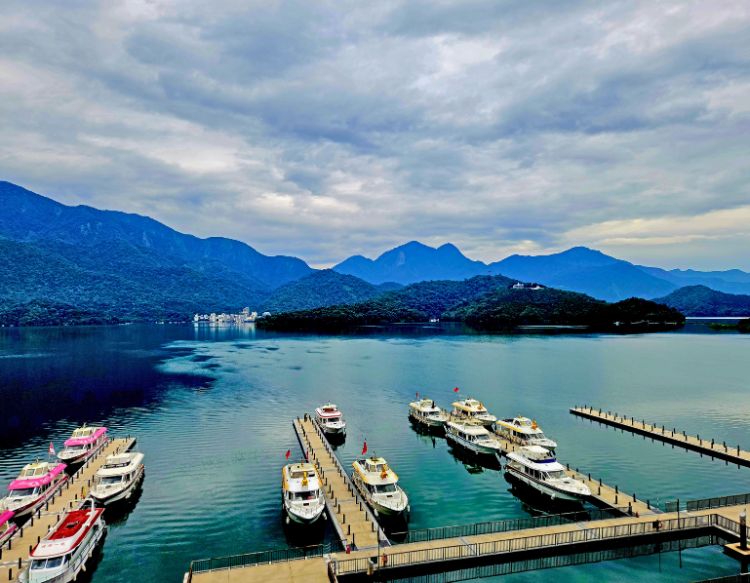
Manmade Sun Moon Lake is Taiwan’s Largest Body of Water
A highlight is the many interesting, interpretive signs along the Bikeway providing details about the flora, fauna and habitat/ecology of the lake area. Halfway along the Bikeway is the Xiangshan Visitor Center, a meeting point and information source about the lake and its history ‒ which is actually manmade and Taiwan’s largest body of water. In the 1930s, when Taiwan was a Japanese colony, a dam was built to produce hydroelectric power that created Sun Moon Lake.
The name is derived from the lake’s shape: round like the sun on the eastern end and curved like a crescent moon on the western.
About a dozen shops in Shuishe rent street bikes, racers, e-bikes and scooters. I went with Giant Bicycle Service because it was one of only several dedicated bike shops, had the highest quality bikes, provided good helmets and locks, and had staff with some basic English who carefully went over the route with me (communication was difficult in Taiwan, even with Google Translate). Giant also sent me home with a special souvenir.
Get an “Official Certificate of Completion”
If you complete the circuit and can prove it (they ask you to take a photo at several designated places along the route and then check your phone to verify), Giant Bicycle Service produces an “official certificate of completion” for you with your photo on it.
Okay, maybe it’s a silly certificate, good for a laugh, but also a fun memento to recall the ebullient 29-kilometer ride and the vivid beauty of Sun Moon Lake.
Read More:
Author Bio: Freelance writer/photographer Edward Placidi discovered his passion for exploring the world ‒ and sampling its foods ‒ as a teenager and has rambled to the far corners of the planet, leaving behind footprints in 120 countries (so far). He has contributed articles and photographs to scores of newspapers, magazines and websites. When not traveling, he is whipping up delicious dishes inspired by his Tuscan grandmother who taught him to cook, with as many ingredients as possible coming from his vegetable and herb garden.
- Together at Sea: A Mediterranean Family Adventure - April 27, 2024
- Travel Guide to Colorado - April 26, 2024
- Travel Guide to Croatia - April 26, 2024

